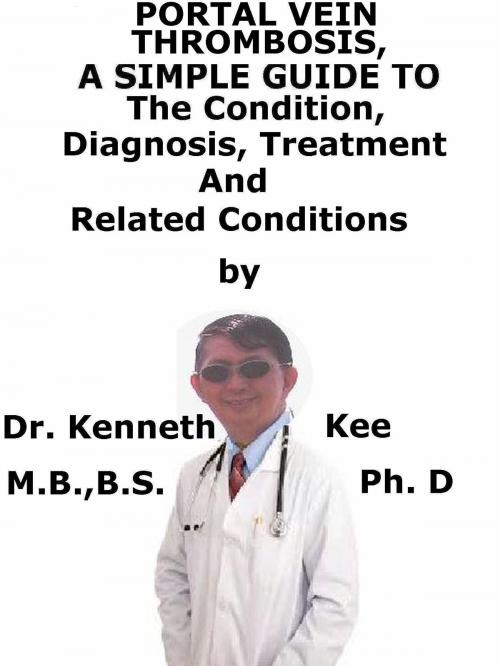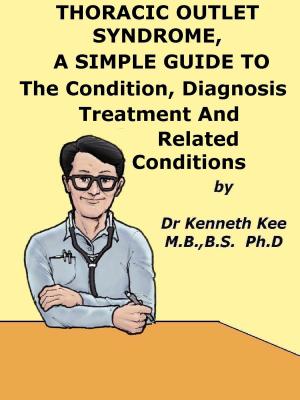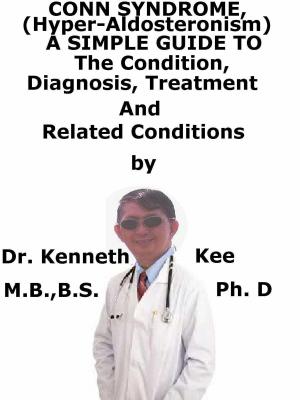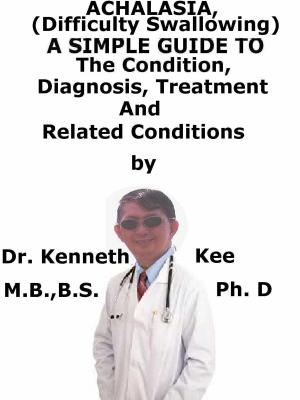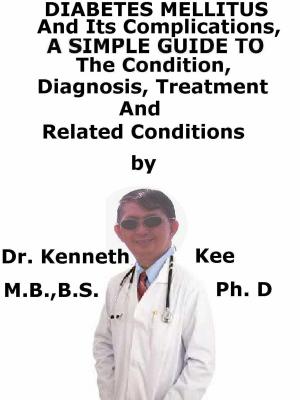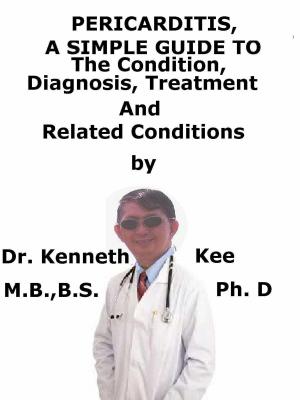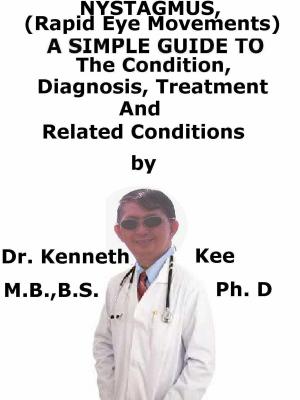Portal Vein Thrombosis, A Simple Guide To The Condition, Diagnosis, Treatment And Related Conditions
Nonfiction, Health & Well Being, Medical, Specialties, Reproductive Medicine, Gynecology & Obstetrics| Author: | Kenneth Kee | ISBN: | 9780463103852 |
| Publisher: | Kenneth Kee | Publication: | June 6, 2018 |
| Imprint: | Smashwords Edition | Language: | English |
| Author: | Kenneth Kee |
| ISBN: | 9780463103852 |
| Publisher: | Kenneth Kee |
| Publication: | June 6, 2018 |
| Imprint: | Smashwords Edition |
| Language: | English |
This book describes Portal Vein Thrombosis, Diagnosis and Treatment and Related Diseases
Portal vein thrombosis (PVT) is the blockage of the portal vein by a thrombus (blood clot).
The portal vein, also called the hepatic portal vein, is a vital vessel that supplies up to 75% of blood supply to the liver.
This vein permits the blood to flow from the intestines to the liver.
A PVT stops this blood flow.
While PVT is treatable, it can be life-threatening.
Acute and chronic PVT is regarded distinct medical disorders even though they indicate the progression of the same disease state.
- Acute PVT suggests a sudden total or partial blockage of the portal vein, and patients may present with no symptoms, or with abdominal pain, nausea and vomiting, diarrhea, low back pain, and fever in the setting of pylephlebitis (septic PVT).
- Chronic PVT may present with after effects of portal hypertension, most often esophageal, and gastric variceal bleeding in the acute hospital setting, even though hyper-splenism and ascites are also seen.
Causes:
A. Localized: - Cirrhosis;
- Malignancy – such as hepatocellular carcinoma, gastric and pancreatic adenocarcinoma;
- Abdominal infection;
- Abdominal inflammatory disorders - pancreatitis, cholecystitis, inflammatory bowel disease,
- Injury to portal vein due to surgery or trauma.
B. Systemic: - Hyper-coagulable states, such as anti-phospholipid antibody syndrome;
- Prothrombin G20210A gene mutation,
- Hyper-homocysteinemia,
- Myeloproliferative disease, such as JAK2V617f mutation, and protein C or S deficiency
These possible causes of PVT can be further classified into three large groups, which is important to know for treatment: - Cirrhotic-related PVT in the situation of underlying liver disease or cirrhosis;
- Malignancy-related PVT, i.e., in hepatocellular carcinoma, and gastric and pancreatic adenoma;
- Non-cirrhotic PVT, i.e., a genetic hyper-coagulable disorder, anti-phospholipid antibody syndrome, and myelo-proliferative disease.
Symptoms:
In most instances of PVT, the patient may show few or no symptoms.
Some of the most frequent symptoms are: - Upper abdominal pain
- Abdominal swelling from excess abdominal fluid
- Fever
In cases of cirrhosis-linked PVT, a fluid wave may be identified on examination; this finding is only seldom seen in acute PVT from non-cirrhotic causes.
On the other hand, the most frequent features of chronic PVT are splenomegaly and gastrointestinal bleeding.
Diagnosis
The symptoms of PVT are distinctive: - Enlarged spleen
- Variceal bleeding
- Vomiting blood
Imaging: - Doppler ultrasonography
- CT Scans
- MRI of the abdomen
- Angiography
Treatment:
Immediate treatment
The doctor should consider urgent surgical intervention if there is worry about bowel infarction, perforation from diverticulitis, or cholecystitis.
Early use of antibiotics is proper in the presence of sepsis or suspicion for pylephlebitis.
Some doctors advise anticoagulation (grade 1B level of evidence) for the treatment of symptomatic PVT.
If there is no contraindication to anticoagulation, such as active bleeding or a high bleeding risk, anticoagulation should be started in patients with extensive PVTs or symptoms.
Medicine
For acute PVT, doctors often give medicine as thrombolytic treatment.
Another prescribed medicine the doctor may give is ocetrotide.
If the patient forms portal vein thrombosis from an infection doctors may give antibiotics
Surgery
Surgical methods may be done depending on the severity of PVT injury.
As a last resort, the doctor may advise shunt surgery.
In severe liver damage, the doctor may need to do a liver transplant.
TABLE OF CONTENT
Introduction
Chapter 1 Portal Vein Thrombosis
Chapter 2 Causes
Chapter 3 Symptoms
Chapter 4 Diagnosis
Chapter 5 Treatment
Chapter 6 Prognosis
Chapter 7 Portal Hypertension
Chapter 8 Liver Cirrhosis
Epilogue
This book describes Portal Vein Thrombosis, Diagnosis and Treatment and Related Diseases
Portal vein thrombosis (PVT) is the blockage of the portal vein by a thrombus (blood clot).
The portal vein, also called the hepatic portal vein, is a vital vessel that supplies up to 75% of blood supply to the liver.
This vein permits the blood to flow from the intestines to the liver.
A PVT stops this blood flow.
While PVT is treatable, it can be life-threatening.
Acute and chronic PVT is regarded distinct medical disorders even though they indicate the progression of the same disease state.
- Acute PVT suggests a sudden total or partial blockage of the portal vein, and patients may present with no symptoms, or with abdominal pain, nausea and vomiting, diarrhea, low back pain, and fever in the setting of pylephlebitis (septic PVT).
- Chronic PVT may present with after effects of portal hypertension, most often esophageal, and gastric variceal bleeding in the acute hospital setting, even though hyper-splenism and ascites are also seen.
Causes:
A. Localized: - Cirrhosis;
- Malignancy – such as hepatocellular carcinoma, gastric and pancreatic adenocarcinoma;
- Abdominal infection;
- Abdominal inflammatory disorders - pancreatitis, cholecystitis, inflammatory bowel disease,
- Injury to portal vein due to surgery or trauma.
B. Systemic: - Hyper-coagulable states, such as anti-phospholipid antibody syndrome;
- Prothrombin G20210A gene mutation,
- Hyper-homocysteinemia,
- Myeloproliferative disease, such as JAK2V617f mutation, and protein C or S deficiency
These possible causes of PVT can be further classified into three large groups, which is important to know for treatment: - Cirrhotic-related PVT in the situation of underlying liver disease or cirrhosis;
- Malignancy-related PVT, i.e., in hepatocellular carcinoma, and gastric and pancreatic adenoma;
- Non-cirrhotic PVT, i.e., a genetic hyper-coagulable disorder, anti-phospholipid antibody syndrome, and myelo-proliferative disease.
Symptoms:
In most instances of PVT, the patient may show few or no symptoms.
Some of the most frequent symptoms are: - Upper abdominal pain
- Abdominal swelling from excess abdominal fluid
- Fever
In cases of cirrhosis-linked PVT, a fluid wave may be identified on examination; this finding is only seldom seen in acute PVT from non-cirrhotic causes.
On the other hand, the most frequent features of chronic PVT are splenomegaly and gastrointestinal bleeding.
Diagnosis
The symptoms of PVT are distinctive: - Enlarged spleen
- Variceal bleeding
- Vomiting blood
Imaging: - Doppler ultrasonography
- CT Scans
- MRI of the abdomen
- Angiography
Treatment:
Immediate treatment
The doctor should consider urgent surgical intervention if there is worry about bowel infarction, perforation from diverticulitis, or cholecystitis.
Early use of antibiotics is proper in the presence of sepsis or suspicion for pylephlebitis.
Some doctors advise anticoagulation (grade 1B level of evidence) for the treatment of symptomatic PVT.
If there is no contraindication to anticoagulation, such as active bleeding or a high bleeding risk, anticoagulation should be started in patients with extensive PVTs or symptoms.
Medicine
For acute PVT, doctors often give medicine as thrombolytic treatment.
Another prescribed medicine the doctor may give is ocetrotide.
If the patient forms portal vein thrombosis from an infection doctors may give antibiotics
Surgery
Surgical methods may be done depending on the severity of PVT injury.
As a last resort, the doctor may advise shunt surgery.
In severe liver damage, the doctor may need to do a liver transplant.
TABLE OF CONTENT
Introduction
Chapter 1 Portal Vein Thrombosis
Chapter 2 Causes
Chapter 3 Symptoms
Chapter 4 Diagnosis
Chapter 5 Treatment
Chapter 6 Prognosis
Chapter 7 Portal Hypertension
Chapter 8 Liver Cirrhosis
Epilogue
